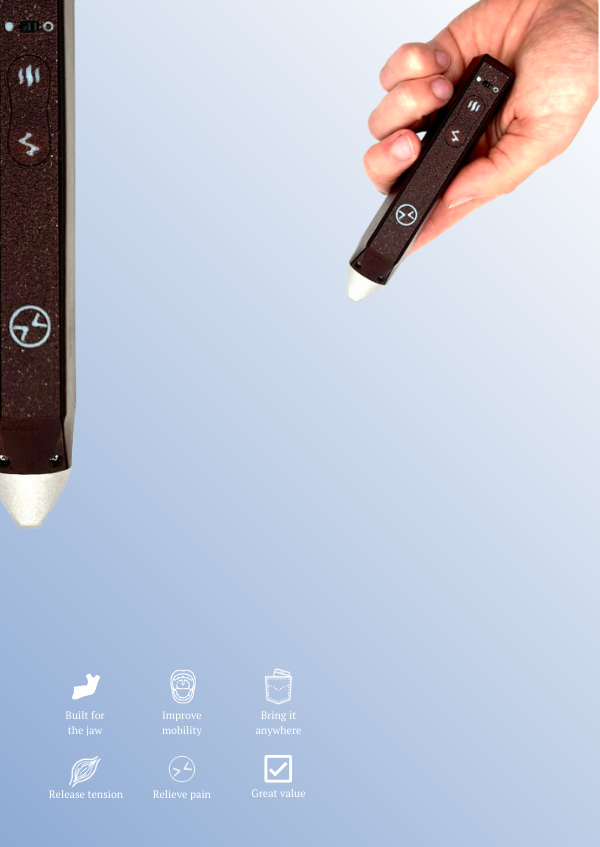Okay, so What's TMJ and Why Does My Jaw Hurt?

For those who want an overview of what TMJ, TMD, TMJD, Myofascial Pain Syndrome, Orofacial Pain, or whatever you want to call it - here it is.
The temporomandibular joint (TMJ) is a crucial hinge that connects your jaw to the temporal bones of your skull. It enables you to perform various movements, like chewing, speaking, and yawning. However, when this joint experiences dysfunction, it can lead to a condition known as TMJ disorder.
TMJ Disorder refers to a range of conditions that affect the TMJ and the surrounding muscles. It can cause significant discomfort and may interfere with daily activities.
It is estimated that 5-12% of the population is affected by TMD, while up to a third of the population has TMD that doesn’t bother them, the vast majority developing it from ages 20-40, with women being affected at twice the rate as men.
While the exact cause of TMJ disorder is often hard to pinpoint, several factors contribute to its development.
Causes of TMJ Disorder
- Bruxism: Teeth grinding or clenching can put undue stress on the TMJ and its surrounding muscles, leading to its dysfunction.
- Jaw Misalignment: Issues with the alignment of the teeth or jaw can strain the TMJ.
- Injury or Trauma: Any form of trauma to the jaw, head, or neck can damage the TMJ.
- Arthritis: Conditions like osteoarthritis or rheumatoid arthritis can affect the joint.
- Stress: Emotional or psychological stress can lead to jaw clenching and muscle tension.
- Congenital Defects: Sometimes congenital deformities of the TMJ can cause asymmetric loading, or slipping which can over time cause abnormal TMJ behavior and TMD
Symptoms
The symptoms of TMJ disorder can vary from person to person and may include:
- Clicking or popping sounds in the jaw
- Jaw pain or tenderness
- Difficulty or pain while chewing
- Locking of the jaw
- Headaches
- Ear aches or Tinnitus
- Facial pain
- Muscle stiffness
Treatment Options
Of course there are surgical options to cure TMJD, but these are always best avoided. Surgery only becomes required if the joint itself has otherwise irreversible damage, or all other treatment options have failed.
Medications
- Pain relievers like acetaminophen
- Nonsteroidal or steroidal(prescription only) anti-inflammatory drugs
- Muscle relaxers to aid those who clench or grind their teeth
- Antidepressants, which can alter pain perception but may also contribute to bruxism (teeth grinding or clenching). Consult your healthcare provider regarding risks and benefits of these medications.
Non-Surgical Treatments
- Heat compress and massage to increase blood flow and relax muscles
- Occlusal Splints: Custom-made dental appliances to reposition the jaw or reduce clenching effects
- Physical therapy: Involves exercises to stretch and release jaw muscles
- Injections: May include injecting substances like BOTOX into painful muscle knots. These injections also reduce muscle tension and can eliminate clenching.
- Ultrasound therapy: Uses sound waves to deliver heat, increasing blood flow and relaxing muscles
- Transcutaneous electrical nerve stimulation (TENS): Uses low-level electrical currents to relax jaw muscles
- Behavioral changes: Such as improving posture and avoiding extremely chewy foods.
Sometimes these options don’t cut it and surgery becomes necessary.
- Arthrocentesis: A minimally invasive procedure that involves inserting a small camera and injecting fluid into the TMJ to help lubricate the joint and wash out any debris or byproducts of inflammation
- Arthroscopy: A procedure that uses a small thin tube (arthroscope) to check, diagnose, and treat the cause of TMJ disorder
- Arthrotomy: A procedure that involves making an incision in the skin and exposing the joint to remove any damaged tissue or bone
- Joint replacement surgery: A procedure that involves replacing the damaged joint with an artificial one
If you found this article interesting or informative, consider following us on instagram @mytmjrelief



